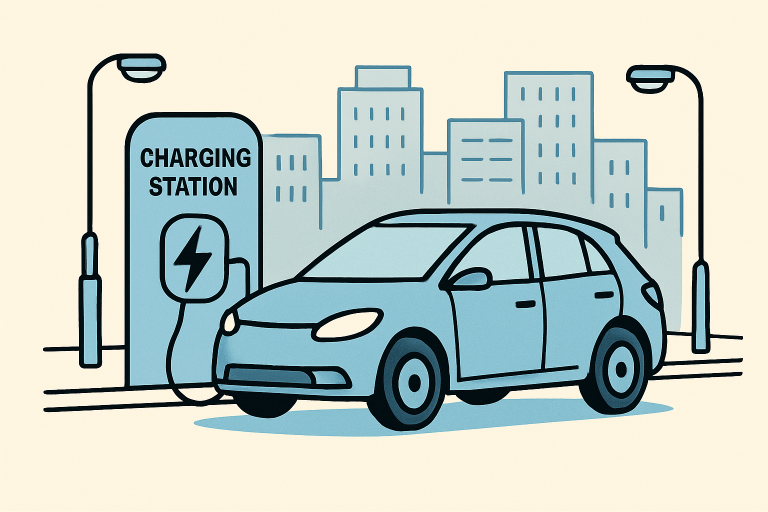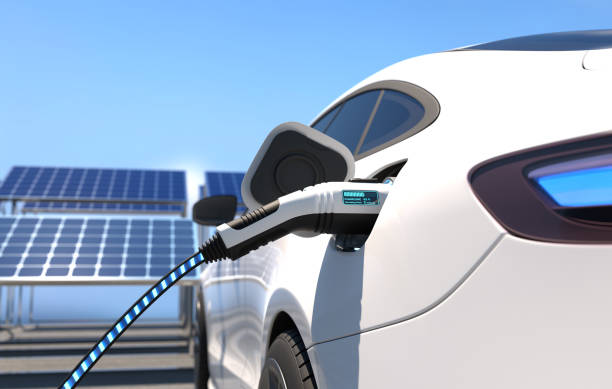How Electric Vehicle Charging Is Shaping the Modern Commute
Contents
Key Takeaways
- Advancements in EV charging technology are enhancing the convenience and feasibility of electric commuting.
- Innovative solutions like integrating chargers into existing urban infrastructure are expanding access.
- Standardization of charging connectors is simplifying the charging process for all EV users.
- Equitable distribution of charging stations is essential to ensure all communities benefit from EV adoption.
Electric vehicles (EVs) have rapidly moved from niche options to mainstream choices, dramatically reshaping how we approach daily travel. With greater awareness of environmental impacts and the desire for cleaner transportation, cities and commuters are embracing the shift to EVs. Central to this revolution is the rise of accessible and convenient charging infrastructure, which is setting the pace for how commuters choose and use their vehicles. As adoption increases, finding and using reliable EV chargers becomes as important as the vehicles themselves, ensuring that the promise of electric mobility can fulfill its environmental and economic potential.
The evolving landscape of EV charging is transforming modern commuting patterns. From upgraded street-level hardware to innovative software platforms, charging solutions are not just keeping up with demand—they’re driving it forward. Solutions integrating with existing infrastructure, such as retrofitted lamp posts or shared parking spaces, are bringing charging options to more neighborhoods, bridging the gap between convenience and accessibility.
Today’s cities also focus on making EV charging universally available, not just in affluent or central locations. With more drivers depending on these networks for their daily routines, equitable access to charging is an issue of transportation justice, widening opportunities across diverse communities. The transition to electric commuting is only possible through the work of skilled electrical contractors who install, maintain, and improve the charging infrastructure that fuels this clean energy revolution. Their expertise ensures that charging stations are safe, efficient, and reliable, further enabling the widespread adoption of electric vehicles in residential and commercial areas.
Advancements in Charging Technology
Recent years have seen remarkable developments in charging hardware and software, directly impacting the modern commuter’s experience. Companies are now transforming existing public structures—like streetlights—into EV charging points, making it easier for city dwellers, renters, and those without private garages to charge their cars nearby. These Level 2 chargers offer faster charging speeds and are a cost-effective way to expand urban charging networks without significant new construction or electrical upgrades. This approach is helping cities respond flexibly to surging EV adoption and increasing demand for local charging options. According to a report by Axios, such innovations are not just meeting demand but also allowing cities to utilize existing power infrastructure in smarter, more sustainable ways.

Standardization of Charging Connectors
Historically, one of the major barriers to EV adoption has been the lack of standardization in charging connectors, resulting in user confusion and incompatibilities. The industry’s move toward the North American Charging Standard (NACS) is resolving this challenge, providing a single connector that supports AC and DC charging. This means drivers can more easily charge at any station, regardless of the car brand, eliminating the need for multiple adapters and streamlining the charging process for consumers and businesses alike. This industry-wide agreement accelerates consumer confidence and private-sector investment, further propelling EV growth across North America.
Equitable Distribution of Charging Stations
The charging infrastructure must be distributed equitably across all neighborhoods for the benefits of electric commuting to reach everyone. Disparities in access can undermine efforts to promote clean transportation, particularly in underserved communities or areas with high-density housing. Urban planners and policymakers increasingly use data-driven approaches to map where stations are most needed—often aligned with busy commuting corridors, public transit hubs, and areas underserved by private garages. As highlighted by a study from Rice University, aligning charger placement with real-life travel patterns is vital for addressing hidden inequities in access to EV infrastructure.
Integration with Renewable Energy
EV charging, when paired with renewable energy sources, greatly reduces the overall carbon footprint of daily commutes. Solar-powered charging stations and facilities capable of utilizing wind or hydroelectric power are becoming more popular, making the process of “refueling” an EV cleaner than ever before. By decentralizing energy use away from fossil fuels, integrated renewable solutions help cities reach their bold climate goals and give commuters confidence that their transportation choices support sustainability. Combining renewables with strong grid-management technology creates a resilient, future-ready charging system.
Impact on Urban Planning
The growth of EV charging infrastructure is deeply interwoven with how cities organize space and movement. Parking lots, curbside zones, offices, and retail centers are redesigned to accommodate charging hardware, influencing traffic patterns, zoning laws, and even real estate values. As municipalities invest in these updates, some leverage smart grid technology to ensure that energy supply and demand remain balanced, reducing strain on local infrastructure and promoting sustainable growth. These city-wide upgrades are helping pave the way to low-emission urban environments and have made planning for EVs a central feature of future-forward city development.
Future Outlook
Continued investment in new charging solutions, greater network interoperability, and community education will be critical in helping more people shift toward electric commuting. As more companies, cities, and homeowners embrace EV charging, the infrastructure foundation will support current needs and future growth in electric mobility. Leadership and vision from the public sector, working hand-in-hand with private innovators, will ensure a robust, equitable, and future-ready ecosystem for all travelers. For the daily commuter, this means cleaner, quieter, and more reliable journeys—an everyday benefit of a transportation revolution in progress.
Wrap-Up
Advancements in EV charging technology, equitable access, and integration with renewable energy are reshaping modern commuting. Standardized connectors, innovative infrastructure solutions, and smart urban planning make electric vehicles more practical and convenient for everyday use. As cities, businesses, and communities continue to invest in reliable, accessible charging networks, electric commuting becomes feasible and a sustainable and inclusive choice—paving the way for a cleaner, more efficient future of transportation.

